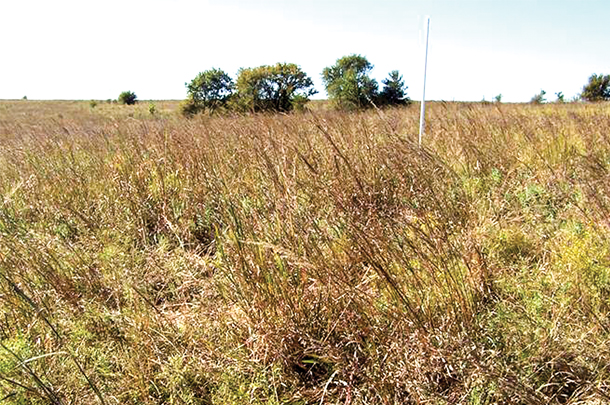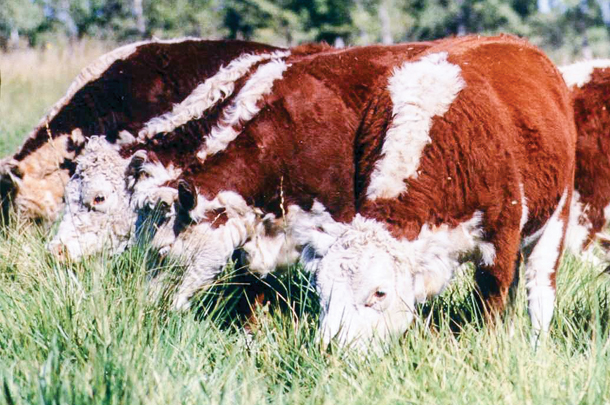Land managers who are trying to restore an ecosystem and productivity must understand it requires a specific process of allocating resources under differing situations. Teague says his long-term study verifies that with appropriate management, multi-paddock grazing improves soil health, vegetation and animal production relative to continuous grazing in small commercial-scale ranches.
Teague is developing a database that can aid producers in determining how different management techniques will provide the best and most sustainable resource and economic results.
He is measuring and documenting the effects of different range grazing management strategies on critical natural resources because to improve their situation, landowners must first understand what tasks actually effect positive changes.
“We are studying how conservation award-winning ranch managers do it,” Teague says. “In the process, we are also finding that ranchers who have improved the condition of the range vegetation and soils have increased productivity and were less impacted by the bad drought."
"If you look at these successful managers, the leading people exceed the average by a margin, and they do that by the way they allocate resources, use different techniques and adapt as things such as weather change.”
Teague’s study is taking place on ranches with similar vegetation east of Wichita Falls, Texas. The study is examining the impacts of changing key management elements and planning ahead to decrease the impact of different drought seasons, wildfires and changing weather patterns.
It is designed to answer questions such as: “How good is any management option ecologically, economically and socially?” and “Within what context is any particular management most likely to be successful?”
Multi-paddock grazing study
Teague says superior results – in terms of range improvement, productivity, watershed function and profitability – have been regularly obtained by ranchers who use multi-paddock grazing involving light to moderate defoliation during the growing season, short periods of grazing, long recovery periods and who are adaptively changing management elements as growing conditions change.

At the ranch scale, when multi-paddock grazing is managed to give best vegetation and animal performance, it is superior to continuous grazing in relation to conservation and restoration of resources, provision of ecosystem goods and services and ranch profitability.
In rangeland ecosystems, maintaining normal soil and ecosystem function over the landscape and watershed is possible only if there is adequate plant cover and species composition to provide protection from soil loss. This allows soil micro-organisms to prosper and maintain ecosystem functions such as water-holding capacity, control of erosion, soil fertility and forage production.
Data was collected after nine years of different grazing management categories on vegetation and soil parameters at a commercial-ranch scale, Teague says.
The study evaluated the impact of multi-paddock grazing at a high but appropriate stocking rate compared to light-continuous and heavy-continuous grazing on neighboring commercial ranches in three proximate counties in north Texas’ tall grass prairie.
Teague found with multi-paddock grazing and ungrazed areas, taller, more productive grasses dominated the vegetation. With heavy continuous grazing, it was dominated by less productive short grasses and forbs. Light continuous grazing had a lower proportion of productive tall grass species than multi-paddock grazing or ungrazed areas.
Teague says there was more bare ground on heavy continuous than light continuous, multi-paddock and ungrazed areas, while soil aggregate stability was higher with multi-paddock than heavy continuous grazing but not light continuous grazing and ungrazed areas. Teague says soil compaction was lowest with multi-paddock grazing and ungrazed areas and highest with heavy continuous grazing.
Water infiltration rate did not differ between grazing management categories, but soil erosion was higher with heavy continuous grazing compared to other grazing management categories, Teague says. Soil organic matter, water holding and fertility were higher with multi-paddock grazing and ungrazed areas than both light continuous and heavy continuous grazing.
The fungal-bacterial ratio was highest with multi-paddock grazing as a result of the greater amounts of tall grass species, indicating superior water-holding capacity and nutrient availability and retention for multi-paddock grazing.
Analyzing and adapting
The general management on the ranches using multiple paddocks per herd was to graze a pasture lightly to moderately for one or three days, followed by a recovery period of approximately 30 to 50 days and 60 to 90 days during fast and slow growing conditions, respectively.
This resulted in two light-to-moderate defoliations during the growing season with regrazing before the majority of plants switched from vegetative to reproductive phases, Teague says. This kept the plants in a leafy, vegetative condition during the growing season to provide a high level of forage quality for the livestock and to ensure the best possible forage regrowth after defoliation.
During drought periods, animal numbers were adjusted to match forage amounts. In the winter, the goal was to graze and trample most of the standing forage to enhance litter cover and minimize self-shading by standing dead grass that would limit plant growth the following spring, Teague says. The continuously grazed ranches in each county were stocked at approximately the same stocking rates from year to year over at least the previous nine years.

They were otherwise selected by the Natural Resource Conservation Service technical staff in each county as being representative of traditional continuous-grazing ranches in the region.
Although the stocking rate was less with lightly stocked continuous grazing, the preferred plants and areas were never allowed any recovery under continuous grazing while multi-paddock grazing, correctly managed, prevented overgrazing and allowed for adequate recovery after defoliation, Teague said. By ensuring light to moderate use in the growing season with adequate recovery, the preferred forages are able to capitalize on good growing conditions.
“The use of multiple paddocks per herd on commercial ranches spreads grazing over the entire landscape in the numerous smaller paddocks rather than allowing a concentration of grazing pressure on preferred areas in the landscape,” Teague says. “It also provides the manager with the option of regulating the grazing pressure on preferred areas and plants by adjusting when to move animals to a new paddock and provides the means to allow grazed plants to recover before they are grazed again.
“If managers adaptively respond to the ever-changing climate by changing the periods of grazing and time allocated for plant recovery, and adjust livestock numbers to match the available feed, as the multi-paddock graziers in this study did, negative effects of grazing by livestock can be minimized.” ![]()
PHOTO 1: Continuous grazing at a high stocking rate is the most common management practice, resulting in overgrazing of preferred plants and patches.
PHOTO 2: Multi-paddock grazing manages adaptively to achieve high productivity, holding more cattle while properly grazing. Management includes matching animal numbers to amount of forage, spreading grazing over the whole ranch, defoliating moderately in the growing season, using graze periods of one to three days followed by adequate recovery.
PHOTO 3: Cattle trained and managed to be calm have much higher performance and are much easier and less costly to manage. Photos contributed by Richard Teague.
Kay Ledbetter is a communications specialist with Texas A&M AgriLife Research. Email Kay Ledbetter.








